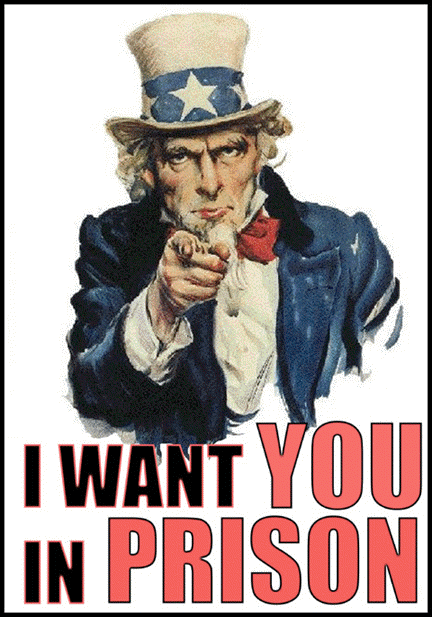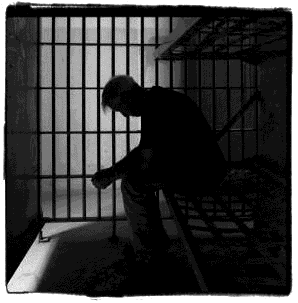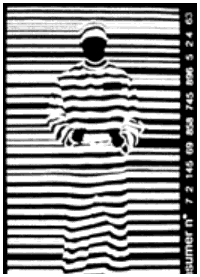"The Prison-Industrial Complex"

First, it reduces the twofold, conjoint and interactive, transformation of the social and penal components of the bureaucratic field to the sole "industrialization" of incarceration. But the changing scale of confinement in America is only one element of a broader redefinition of the perimeter and modalities of state action with regard to the "problem populations" residing in the nether regions of social and urban space. It is tightly connected to, and cannot be explained in isolation from, the epochal transition from "welfare" to "work fare." By contrast, it is very dubious whether it can be tied to the "globalization" of the overly large and vague "isms" of capitalism and racism --- the two favorite culprits in this activist tale of government evil --- neither of which provides the necessary and sufficient conditions for the country's unprecedented and unrivaled carceral experiment.
Second, the imagery of the "prison-industrial complex" accords the role of driving force to the pecuniary interest of firms selling correctional services and wares or allegedly tapping the vast reserves of labor held under lock. It maintains that the profit motive is crucial to the onset of mass incarceration when, in reality, the latter pertains first and foremost to a political logic and project, namely, the construction of a post-Keynesian, "liberalpaternalist" state suited to instituting desocialized wage labor and propagating the renewed ethic of work and "individual responsibility" that buttress it. Profiteering from corrections is not a primary cause but an incidental and secondary consequence of the hypertrophic development of the penal apparatus. Indeed, the fact that private concerns are reaping benefits from the expansion of a government function is neither new nor specific to incarceration: the delivery of every major public good in the United States, from education and housing to safety and health care, grants a vast role to commercial or third-sector parties --- relative to medical provision, for instance, punishment remains distinctively public. Nor is privatization necessary: banning adult imprisonment for profit did not prevent California from becoming a leader in the drive to mass incarceration.
 Similarly, the ritual denunciation of the superexploitation of inmates under conditions evocative of penal slavery cannot hide the fact that only a minuscule and stagnant fraction of the U.S. carceral population works for outside firms (under one percent by the most generous counts) and that no economic sector relies even marginally on convict laborers. As for the prisoners toiling for state or federal industries behind bars, their output is negligible and they are "employed" at a net loss to the government, even though their activity is massively subsidized and heavily protected. Its spectacular growth notwithstanding, it is hard to square the claim that "the prison industrial complex is becoming increasingly central to the growth of the U.S. economy" with the raw statistics of national accounting: the $7,000,000 that the United States spent on corrections at the local, state, and federal levels in 2001 amounted to barely one-half of one percent of the gross domestic product of $10,128,000,000 that year. Far from being "an essential component of the U.S. economy," corrections remains insignificant on the production side and acts not as an overall stimulus to corporate profits but as a gross drain on the public coffers.
Similarly, the ritual denunciation of the superexploitation of inmates under conditions evocative of penal slavery cannot hide the fact that only a minuscule and stagnant fraction of the U.S. carceral population works for outside firms (under one percent by the most generous counts) and that no economic sector relies even marginally on convict laborers. As for the prisoners toiling for state or federal industries behind bars, their output is negligible and they are "employed" at a net loss to the government, even though their activity is massively subsidized and heavily protected. Its spectacular growth notwithstanding, it is hard to square the claim that "the prison industrial complex is becoming increasingly central to the growth of the U.S. economy" with the raw statistics of national accounting: the $7,000,000 that the United States spent on corrections at the local, state, and federal levels in 2001 amounted to barely one-half of one percent of the gross domestic product of $10,128,000,000 that year. Far from being "an essential component of the U.S. economy," corrections remains insignificant on the production side and acts not as an overall stimulus to corporate profits but as a gross drain on the public coffers.
Third, this activist vision is premised on a flawed parallelism between the state functions of national defense and penal administration, which overlooks this crucial difference: military policy is highly centralized and coordinated at the federal level, whereas crime control is widely decentralized and dispersed among federal authorities, one hundred state departments of justice and corrections, and thousands of county and city administrations in charge of the police, courts, and jails. The phrase "criminal justice system" hides a loosely coupled web of bureaucratic agencies endowed with wide discretion and devoid of an overarching penal philosophy or policy. Even if some farsighted ruling group had somehow concocted a nightmarish plan designed to turn the carceral system into a lucrative industry using the bodies of the dark-skinned poor as "raw materials," there is no single lever that it could have seized and used to ensure their delivery. The simplistic thesis that capitalist lucre drives carceral growth leaves unexplained the specific mechanisms that have produced the remarkable convergence of correctional trends across the different jurisdictions of the United States and only adds to the "compound mystery" of nationwide hyperincarceration in the absence of "a distinctive policy precursor. "
Finally, constricted by its prosecutorial approach, the woolly notion of "prison-industrial complex" overlooks the wide-ranging effects of the introduction, albeit in a limited and perverted form, of the welfarist logic within the carceral universe itself. Correctional institutions have been profoundly transformed over the past three decades, not only by changes in the scale and composition of their clientele, but also by the prisoners' rights movement, the rationalization and professionalization of confinement, and the increasing oversight of the courts. Thus judges have demanded of jail and prison authorities that they meet a battery of minimal norms in matters of individual rights and institutional services, entailing, for example, the provision of education to underage inmates and psychiatric services on a mass scale.  However deficient it remains, correctional health care has improved substantially to the point where it is typically superior to the meager medical services accessible to the poorest convicts on the outside and it reaches millions yearly. So much so that public health scholars and officials have come to view the carceral system as a crucial point of intervention for detecting and treating a range of infectious disease common among low-income urban populations. Such costly delivery of public services of first resort to destitute populations via correctional facilities is difficult to square with the castigatory notion of "prison-industrial complex" turned toward generating economic profit and social harm.
However deficient it remains, correctional health care has improved substantially to the point where it is typically superior to the meager medical services accessible to the poorest convicts on the outside and it reaches millions yearly. So much so that public health scholars and officials have come to view the carceral system as a crucial point of intervention for detecting and treating a range of infectious disease common among low-income urban populations. Such costly delivery of public services of first resort to destitute populations via correctional facilities is difficult to square with the castigatory notion of "prison-industrial complex" turned toward generating economic profit and social harm.
Loïc Wacquant
©2009 University of Minnesota Press